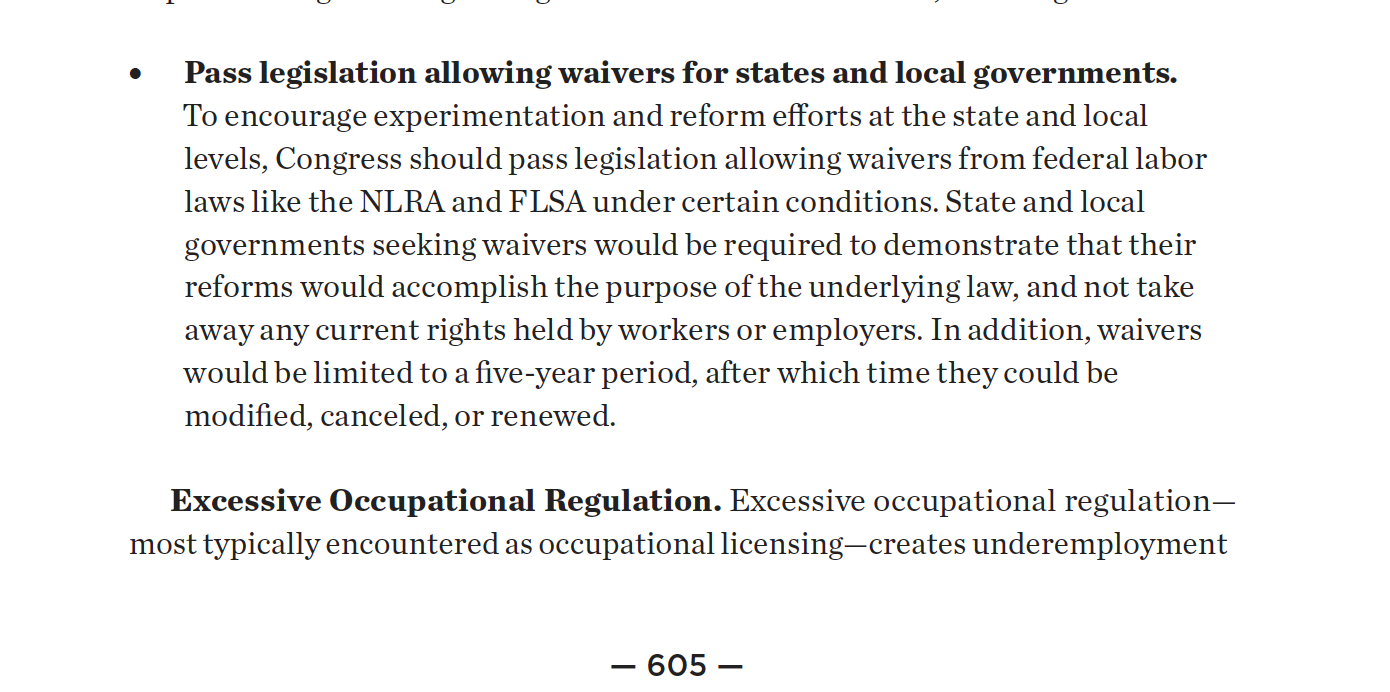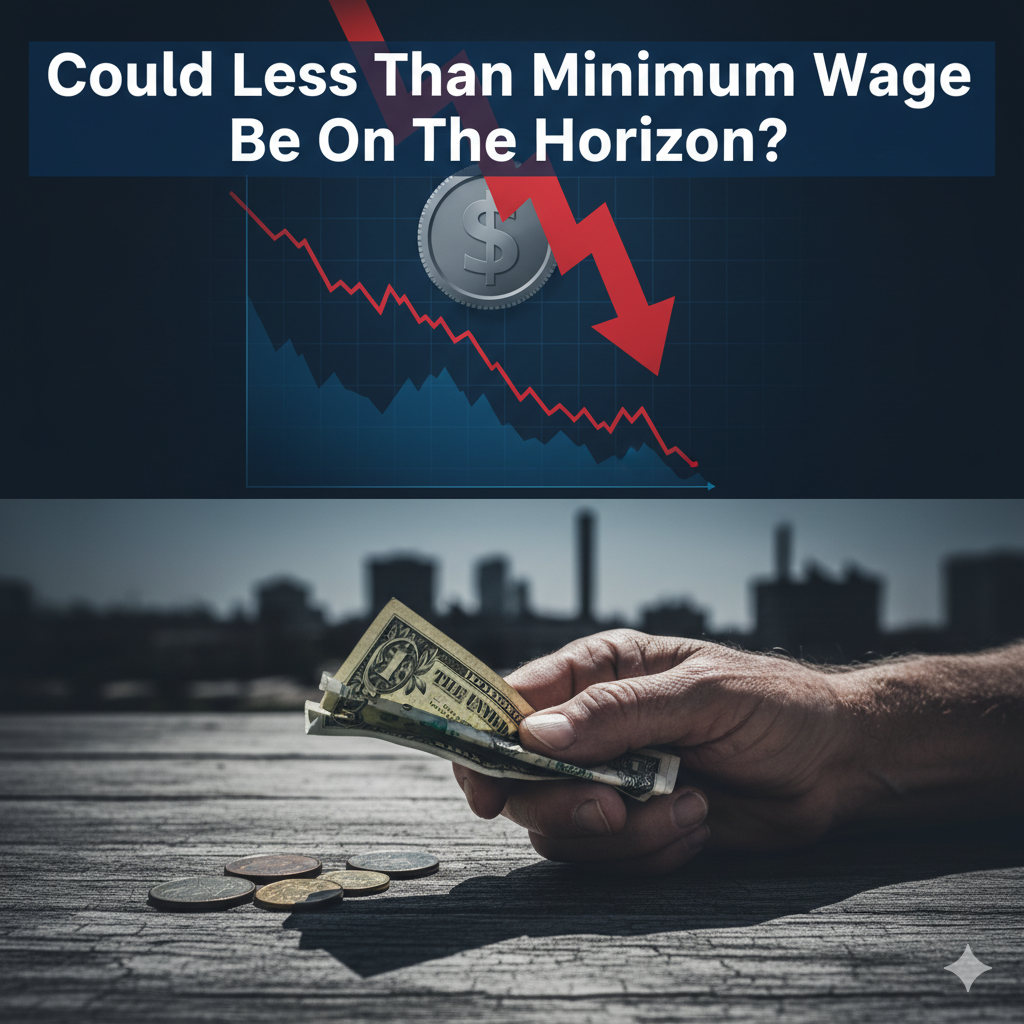Policy Shifts
The American labor landscape stands at a critical juncture. With the introduction of House Resolution 1319 in February 2025 and ongoing debates about worker classification, millions of workers may soon find themselves without the basic protections of minimum wage laws.
When we examine HR1319 alongside recent policy recommendations and administrative actions, a troubling picture emerges of a coordinated effort to expand categories of workers who could legally be paid less than minimum wage.
HR1319: Redefining Who Gets Minimum Wage Protection
Introduced on February 13, 2025, by Representative Kiley of California and colleagues, HR1319 seeks to amend both the Fair Labor Standards Act of 1938 and the National Labor Relations Act to “clarify the standard for determining whether an individual is an employee” (H.R. 1319, 2025). On the surface, this might seem like a technical adjustment. In reality, it represents a fundamental shift in who qualifies for basic workplace protections.
The bill establishes new criteria for classifying workers as independent contractors rather than employees. Under HR1319, an individual would be classified as an independent contractor if the hiring entity “does not exercise significant control over the details of the way the work is performed” and if “the individual has the opportunities and risks inherent with entrepreneurship” (H.R. 1319, 2025, Sec. 1). This standard is notably more permissive than current Department of Labor guidelines, which use a six-factor “economic reality” test to determine worker classification.
The implications are stark: independent contractors are not covered by minimum wage laws, overtime protections, unemployment insurance, or workers’ compensation. By making it easier to classify workers as independent contractors, HR1319 effectively creates a pathway to pay workers less than the federal minimum wage of $7.25 per hour—or indeed, any wage the market will bear.
The Mandate for Leadership: A Blueprint for Labor Deregulation
The significance of HR1319 becomes clearer when viewed alongside recommendations in the conservative policy document “Mandate for Leadership: The Conservative Promise” (commonly known as Project 2025). On page 605, this document outlines a vision for “worker-led benefits experimentation” that would fundamentally reshape unemployment insurance and labor protections.
The document advocates that the Department of Labor “approve non-public worker organizations as UI administrators” and “offer waivers from the standard requirements imposed on unemployment compensation” to states proposing “suitable alternatives” (Project 2025, 2025, p. 605). While framed as promoting innovation and federalism, these recommendations would allow states to experiment with reducing worker protections under the guise of flexibility.
Elsewhere in the document, the authors explicitly recommend that Congress “pass legislation allowing waivers for states and local governments” from federal labor laws like the Fair Labor Standards Act, provided states demonstrate their reforms would “accomplish the purpose of the underlying law” without taking away “any current rights held by workers or employers” (Project 2025, 2025, p. 606). However, the vague language about “accomplishing the purpose” leaves substantial room for interpretive maneuvering that could weaken worker protections in practice.
Recent Administrative Actions: Tilting the Playing Field
These legislative and policy proposals didn’t emerge in a vacuum. On May 1, 2025, the Department of Labor’s Wage and Hour Division announced it would no longer enforce the Biden administration’s 2024 rule on worker classification, which had made it more difficult for companies to classify workers as independent contractors (Nelson Mullins, 2025). This administrative action immediately made it easier for businesses to classify workers as contractors, thereby exempting them from minimum wage requirements.
The timing is significant. With the DOL stepping back from enforcement of stricter classification standards, and with HR1319 waiting in the wings to codify this more permissive approach, we’re seeing a coordinated policy shift that could leave millions of workers without basic wage protections.
The gig economy has become ground zero for these debates. As scholars note, “most gig workers are categorized as independent contractors rather than employees, rendering them ineligible for fundamental protections under wage and hour laws” (New York State Bar Association, 2025). With an estimated 36% of U.S. workers participating in the gig economy in some capacity, the stakes couldn’t be higher (Dua et al., 2022).
The Sub-Minimum Wage Reality Already Exists
For some workers, sub-minimum wage pay is already legal—and expanding. The federal tipped minimum wage has remained frozen at $2.13 per hour since 1991 (Paycor, 2025). Employers can claim a “tip credit” to make up the difference to the federal minimum wage of $7.25, but enforcement is notoriously difficult, and wage theft is rampant in tipped industries.
Some states have moved to eliminate the tipped sub-minimum wage—California, Washington, Oregon, Montana, Minnesota, Nevada, and Alaska now require employers to pay tipped workers the full state minimum wage before tips (TouchBistro, 2024). However, the majority of states still allow the federal tipped minimum of $2.13 per hour, creating a two-tiered wage system where millions of workers, predominantly women and people of color, earn far less than minimum wage in direct wages.
Additionally, workers with disabilities have historically been paid sub-minimum wages under Section 14(c) certificates of the Fair Labor Standards Act. While Illinois and other states have begun phasing out these certificates (Illinois Department of Labor, 2025), they remain in use in many jurisdictions, allowing employers to pay workers with disabilities as little as pennies per hour.
What’s On the Horizon?
The convergence of HR1319, administrative rollbacks, and policy recommendations suggests we may be heading toward an era of expanded sub-minimum wage work arrangements. Here’s what could happen:
Massive Reclassification: If HR1319 becomes law, we could see millions of workers reclassified as independent contractors overnight. Delivery drivers, home health aides, construction workers, truck drivers, and others could lose minimum wage protections. The Yale Law Journal notes that “misclassification of workers as independent contractors has exploded to crisis levels,” and HR1319 would accelerate this trend (Yale Law Journal, 2025).

State-Level Experimentation: The Mandate for Leadership’s call for waivers from federal labor laws would allow states to create their own labor standards. While some states might strengthen protections, others could race to the bottom, creating regional disparities in worker rights similar to the current patchwork of right-to-work laws.
Algorithmic Wage Suppression: As more workers are classified as independent contractors working through digital platforms, algorithms will increasingly determine their pay. Without minimum wage protections, these platforms can adjust compensation based purely on supply and demand, potentially driving wages below subsistence levels during periods of high worker availability.
Expansion of Existing Loopholes: The tipped minimum wage and disability wage certificates could serve as templates for creating additional categories of sub-minimum wage work. Agricultural workers, student workers, and trainees could see their already-limited protections further eroded.
The Economic Reality Test
The Department of Labor’s “economic reality” test, established through decades of court precedent, asks whether workers are truly “in business for themselves” or are “economically dependent” on their employer (Department of Labor, 2024). This test examines factors like the nature and degree of control the employer exercises, the worker’s opportunity for profit or loss, the permanence of the working relationship, and whether the work is integral to the employer’s business.
HR1319 would replace this comprehensive analysis with a simpler two-prong test focused primarily on control and entrepreneurial opportunity. This shift represents more than a semantic change—it’s a fundamental reconceptualization of employment that could exclude millions from legal protections.
As a Federal Register notice on worker classification explains, “employees misclassified as independent contractors are denied basic workplace protections, including the rights to minimum wage and overtime pay,” while employers who misclassify workers “are placed at a competitive advantage” over law-abiding businesses (Federal Register, 2024).
Looking Forward
The question posed in this article’s title—”Could less than minimum wage be on the horizon?”—may be somewhat misleading. For millions of American workers, sub-minimum wage pay is already here. Tipped workers earning $2.13 per hour, gig workers paid per task rather than per hour, and misclassified “independent contractors” already exist outside minimum wage protections.
What’s on the horizon is not the creation of sub-minimum wage work, but its massive expansion. HR1319, combined with administrative rollbacks and state-level deregulation, could normalize what is currently exceptional, making sub-minimum wage pay the rule rather than the exception for growing sectors of the American workforce.
The stakes extend beyond individual paychecks. As the Federal Trade Commission recently noted, worker misclassification “gives employers both the incentive and opportunity to exploit asymmetries in antitrust liability protection between workers” and allows businesses to “gain an unfair advantage against competitors who provide better compensation and job conditions to workers” (FTC, 2025).
Whether this future materializes depends on legislative outcomes, enforcement priorities, legal challenges, and ultimately, on public awareness and advocacy. Workers, advocates, policymakers, and the public must understand what’s at stake: not just wages for a few, but the fundamental question of whether America will maintain a floor beneath which no worker can fall—or whether that floor will become more of a suggestion than a guarantee.
References
Department of Labor. (2024, January 10). Employee or independent contractor classification under the Fair Labor Standards Act. Federal Register, 89(7), 1638-1752. https://www.federalregister.gov/documents/2024/01/10/2024-00067/employee-or-independent-contractor-classification-under-the-fair-labor-standards-act
Dua, A., Ellingrud, K., Hancock, B., Luby, R., Madgavkar, A., & Pemberton, S. (2022, August 23). Freelance, side hustles, and gigs: Many more Americans have become independent workers. McKinsey & Company. https://www.mckinsey.com/featured-insights/sustainable-inclusive-growth/future-of-america/freelance-side-hustles-and-gigs-many-more-americans-have-become-independent-workers
Federal Trade Commission. (2025, January 14). FTC issues policy statement clarifying that independent contractors, gig workers’ organizing activities are shielded from antitrust liability [Press release]. https://www.ftc.gov/news-events/news/press-releases/2025/01/ftc-issues-policy-statement-clarifying-independent-contractors-gig-workers-organizing-activities-are
H.R. 1319, 119th Cong. (2025). https://www.congress.gov/bill/119th-congress/house-bill/1319/text
Illinois Department of Labor. (2025, January 7). Minimum wage law. https://labor.illinois.gov/laws-rules/fls/minimum-wage-law.html
Nelson Mullins. (2025, May). Department of Labor plans to rescind Biden’s gig worker rule making it easier for companies to use independent contractors. The HR Minute. https://www.nelsonmullins.com/insights/blogs/the-hr-minute/employee-compensation/department-of-labor-plans-to-rescind-biden-s-gig-worker-rule-making-it-easier-for-companies-to-use-independent-contractors
New York State Bar Association. (2025, August 5). Reimagining workers’ rights in the gig economy: Bridging the gap between independent contractors and employees. NYSBA. https://nysba.org/reimagining-workers-rights-in-the-gig-economy-bridging-the-gap-between-independent-contractors-and-employees/
Paycor. (2025, June 5). Minimum wage for tipped employees by state. https://www.paycor.com/resource-center/articles/minimum-wage-tipped-employees-by-state/
Project 2025. (2025). Mandate for Leadership: The conservative promise. The Heritage Foundation.
TouchBistro. (2024, December 13). 2025 tipped minimum wage rates by state. https://www.touchbistro.com/blog/the-state-of-tipped-minimum-wage-in-the-restaurant-industry/
Yale Law Journal. (2025). Gig-economy myths and missteps. The Yale Law Journal Forum. https://www.yalelawjournal.org/forum/gig-economy-myths-and-missteps


Leave a Reply